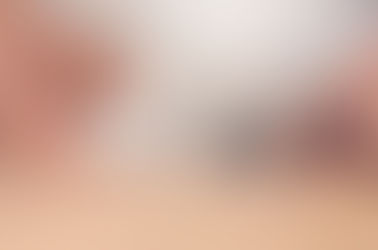Acupuncture... What's the Point?
- Kearstin. R. Tripi, L.Ac
- Mar 5, 2017
- 3 min read

Acupuncture and Traditional Chinese medicine has become increasingly popular over the past 25 years in the United States. However, many healthcare consumers are still unaware of this relatively painless and effective treatment. Acupuncture is useful in treating conditions such as musculoskeletal pain, stress, migraines, and infertility, to name a few. Some consumers are apprehensive about Acupuncture due to a fear of needles. However, unlike the hypodermic needles that are used to administer shots or take blood, Acupuncture needles are extremely thin. In some cases, the patient might experience a slight prick or tingling sensation at the needle site, but most people report that the procedure is painless and quite relaxing.
The efficacy of this ancient medicine speaks for itself and has helped Acupuncture and Traditional Chinese Medicine become a bigger part of mainstream healthcare. Every year, more and more physicians are opting to combine Eastern and Western treatments for their patients’ well-being. Research from the National Institute of Health supports this movement showing that Acupuncture is effective for use in pain management, osteoarthritis, postoperative or chemotherapy-related nausea, addiction, stroke rehabilitation, infertility and asthma, among others. The World Health Organization also lists acupuncture’s efficacy in relieving anxiety, panic disorders and insomnia along with forty-two other medical conditions. Acupuncture is, in fact, a Science based medicine backed by research.
Acupuncture is a modality of Traditional Chinese Medicine that originated in Ancient China over 5,000 years ago. The Ancient Chinese discovered that every living being has energy that flows through invisible meridians (energy lines) throughout the body. This energy, known as "Qi" is the motive life force. In healthy individuals the Qi flows smoothly through the channels/ meridians. Imbalance in the flow of Qi results in illness and/or disease.
The same basic principles are used in treating various conditions, today. Acupuncture can be used a sole method of treatment, but also works well as an adjunct therapy.
Conditions Treated
Acupuncture is effective in treating various disorders and symptoms including, but not limited to the following:
- Addiction
- Anxiety
- Arthritis, Tendonitis & Joint Pain
- Auto Injuries
- Chronic Fatigue Syndrome
- Common Cold & Influenza
- Constipation
- Degenerative Disk Disorders
- Depression
- Facial Rejuvenation
- Fibromyalgia
- Headaches
- Hypertension
- Indigestion, Gas, Bloating
- Infertility
- Insomnia
- Menopause symptoms
- Migraines
- Morning Sickness and Hyperemesis
- Musculoskeletal pain
- Nausea
- Orthopedic Conditions
- Pain
- PMS & Menstrual Irregularities
- Reproductive Issues
- Sports Injuries
- Stress
- Tendonitis
- Smoking Cessation
- Weight management
FAQ
How does Acupuncture Work?
Multiple studies have shown that Acupuncture initiates various biological responses.
There are several theories to explain how Acupuncture works. In a nutshell, Acupuncture helps the body to do what it was meant to do... heal itself. Some of the most common theories include:
- Acupuncture reduces inflammation and relaxes muscles
- Acupuncture stimulates the release of endorphins, which relieve pain
- Acupuncture stimulates the release of neurotransmitters (substances that that transmit nerve impulses to the brain)
-Acupuncture has a profound effect on the Autonomic Nervous System
- Acupuncture stimulates circulation
- Acupuncture enhances the body’s immune response
- Acupuncture influences the electrical currents of the body
Does Acupuncture Hurt?
Extremely fine needles are used in the treatment of Acupuncture, making the experience almost painless. Most patients don't even feel the needles being inserted. The Acupuncture needles used are as fine as a few hairs on your head. All of my patients find their Acupuncture treatments to be very relaxing. In fact, most people fall asleep during their treatment.
What is a typical Acupuncture treatment like?
Upon arrival the patient is asked to fill out a detailed health history questionnaire. Then, the acupuncturist will review the health history with the patient and go over the patient’s primary health concern and lifestyle. The acupuncturist will take the patient's pulses and look at his/her tongue (In Chinese medicine the tongue and pulses are representative of the various organ/meridian systems and help in the diagnostic process).
After the interview, the practitioner will come up with a diagnosis and treatment plan for the patient.
Then, the needles will be inserted into various acupuncture points. The patient may feel a heaviness or tingling sensation around the needle insertion site. The needles are typically retained for 20-30 minutes.
How many Acupuncture treatments are needed?
The number of Acupuncture treatments needed is based on the severity and chronicity of the condition. However, most patients experience relief after the very first treatment. Typically, 5-10 treatments are needed to resolve the condition.
What kind of needles are used?
Tiny filiform needles are used for Acupuncture treatment. All of the needles are disposable, pre-sterilized and pre-packaged. After each treatment, the needles are thrown away and new needles are used every time.
Are there any side effects of Acupuncture treatment?
Acupuncture is a safe treatment option, offering little to no side effects, making it an ideal alternative to more invasive procedures. Most people do not experience any ill side effects from Acupuncture. Occasionally, minor bruising can occur at the needle site.

























Comments